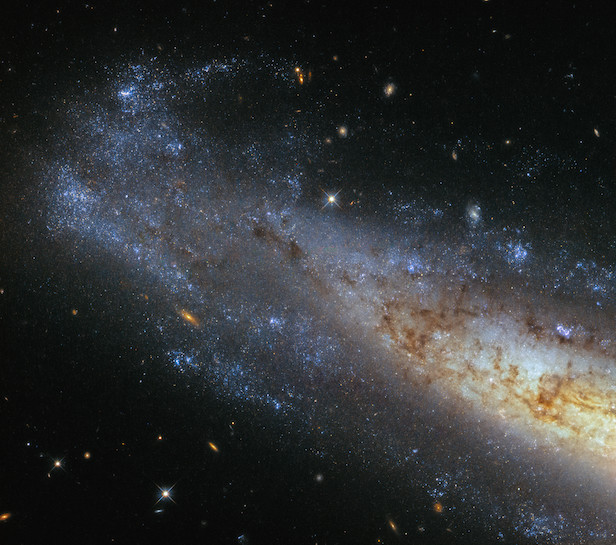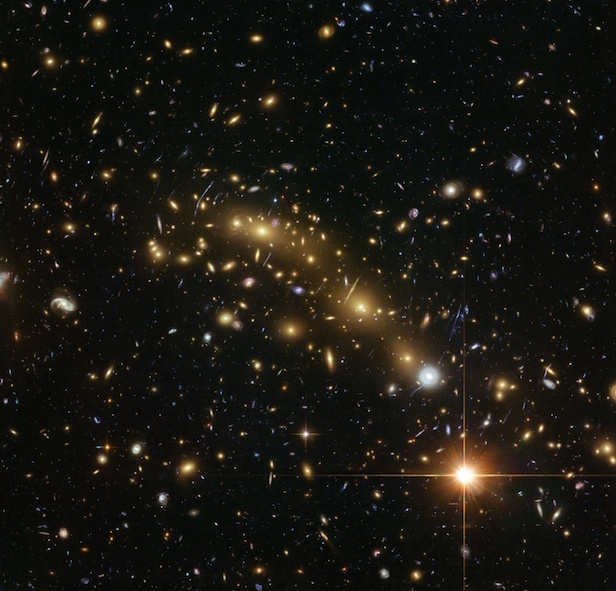Largest galaxies were aligned ten billion years ago
Ancient light from the distant structures can tell us more about the early universe

Because of how far away the galaxy is, the light travels for billions of years, reach it is collected by the Hubble Space Telescope. Image credit: ESA/Hubble, NASA
By observing light from the universe’s most distant and massive galaxies, astronomers have deduced that the largest galaxies are aligned to their surroundings even ten billion years ago. The discovery will change our models on galaxy formation in the early cosmos furthermore.
When we look at Hubble Deep Field images, there appears to be no order to them. There are simply a bundle of galaxies together with no aligned orientation. Although galaxies being aligned have been observed previously, it still begs the question, at which point do these giant structures align with their surroundings?
This occurrence is what Michael West of Lowell Observatory and his team has studied. Using the Hubble Space Telescope, he has revealed that the universe’s most massive galaxies lined up with their surroundings about ten billion years ago. “It’s an important new piece of the puzzle,” he says. “Whatever caused these alignments happened early.”
West and his team observed sixty-five giant galaxies, whose light takes billions of years to reach us at Earth. By observing this ancient light, they’re essentially looking back in time with the past revealing that these massive galaxies were already aligned when the universe was as young as a third of its current age.

How galaxies formed in the early ages of the Universe has been one of the unanswered questions for decades. Image credit: ESA/Hubble, NASA. HST Frontier Fields
These results have an impact on how we interpret galaxy formation, as this is the furthest back in time such a phenomenon has been observed. Currently there are a couple of theories for how such an alignment occurs. These recent observations haven’t disproved these theories, but it does provide time constraints.
The first theory is that the largest galaxies continue to grow by accreting smaller nearby galaxies, this occurs in a particular manner that reflect the observable universe with all its filaments and strings, representing a cosmic web. The other theory suggests that the mighty gravity of the galaxies orientate the surrounding galaxies to their positions.
West and this team are enthusiastic to observe even more distant galaxies to further cement this discovery. However this is not an easy process, even with Hubble’s supreme light gathering capabilities, there are still obstacles to overcome. West explains: “We’re trying to measure the shapes and orientations of galaxies that appear very faint and very small because of their great distance, which is challenging.”
Keep up to date with the latest space news in All About Space – available every month for just £4.99. Alternatively you can subscribe here for a fraction of the price!




